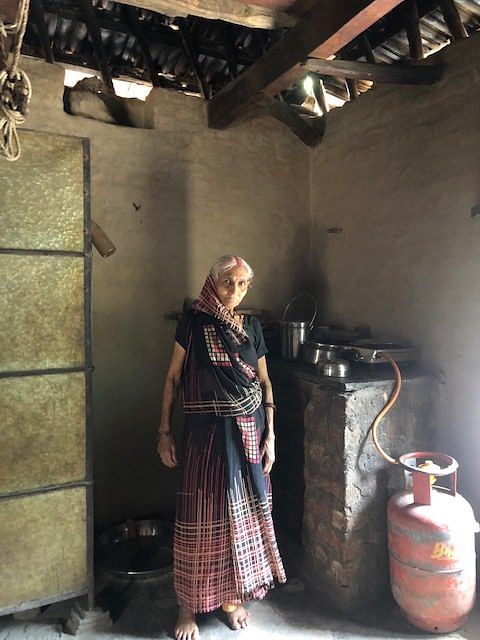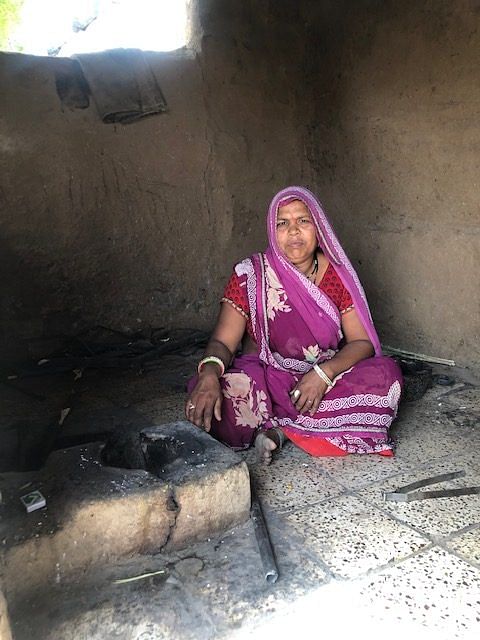Sehore/Dewas/Indore/Raisen/Mandla (Madhya Pradesh): Resham Bai, 57, of Amajhir village in Sehore district got her first gas cylinder under the Narendra Modi government’s Ujjwala scheme around three months ago. Accustomed to a traditional chulha, she was afraid to light it since it was new for her.
It was only a day ago that she finally managed to use it after much coaxing by her son, and has cooked two meals for the family so far. She says she can feel a significant difference in just a day, with cooking on a gas stove requiring less effort and time as well as providing a smokeless experience.
Resham Bai is among the many recipients of free gas connections under the Pradhan Mantri Ujjwala Yojana (PMUY) in rural Madhya Pradesh who claim it has made their lives better. When voters recount the “work” done by the Modi-led government, Ujjwala — or “gas ki tanki”, as it is more commonly known here — is among the first to be cited.

Ujjwala, thus, is certain to have a bearing on the fortunes of the Bharatiya Janata Party (BJP) as it seeks re-election in the Lok Sabha polls, with many rural voters viewing it positively, besides other government initiatives like rural housing and electrification, and roads.
The positivity factor, however, is not absolute. There are some who complain that they applied for a connection but haven’t received it yet. But even more importantly, what has proved to be a dampener for many is the cost of refilling the cylinder and their inability to afford it.
As a result, the purpose of moving away from the harmful chulha hardly seems to have been met completely, with several Ujjwala recipients still using it along with their gas stoves.
The scheme
Ujjwala is perhaps Modi’s most ambitious scheme and one that he has rigorously thrown his weight behind. It is also among the initiatives Modi and his party members mention most often when they talk about the NDA government’s achievements.
Since its launch three years ago, in May 2016, around 7 crore households have received subsidised LPG connections under the scheme.
The idea is to prevent the damage from hazardous fuels, with the government aiming to achieve universal LPG coverage by 2020.
The scheme is applicable to Below Poverty Line (BPL) households, and connections are allotted in the names of women members — one cylinder per household.
The central government bears the cost of the connection. Public sector oil companies supply the connection — along with a standard 14.2 kilogram cylinder and a stove. For subsequent refills, beneficiaries have to pay the full amount and the subsidy is then transferred directly to their bank accounts.
According to a recent Indian Readership Survey (IRS), 72 per cent of Indians now have LPG stoves.
Also read: Modi govt schemes on LPG, power could save India 2.7 lakh lives each year: IIT study
Impact on the ground
While data is one aspect, it is on the ground and across villages that the scheme’s impact is most visible.
Besides the absence of smoke, the gas connection has meant women are able to save time in cooking, and the hassle of gathering wood to light a chulha is also addressed.
“Earlier, I would have to manage my children and spend hours cooking on the chulha. It also made my eyes burn and impacted the children too,” said Rekha Verma of Budhangaon, a village in Dewas district.
“Plus, imagine how difficult it would have been in the heat. We’ve had a gas connection under Ujjwala for four or five months now and it has made my life much easier. There is no smoke, heat and nobody has to bother getting wood. Especially when guests come suddenly, it takes me no time to make tea and snacks. This is our third refill,” she added.

Several households agree with Rekha — women say they have more time to focus on other things, including working outside the house.
Resham Bai’s son Arjun Verma helped fill forms for everyone in his village who was eligible under the scheme. He claims among 250 households, as many as 140 got connections after their forms were submitted. Both Resham Bai and Arjun say they will vote for Modi since he has “brought in a lot of positive changes”.
Ganesh Ram of Mandla told ThePrint that his mother suffered from wheezing and issues like watery eyes because of the chulha. The gas connection secured under Ujjwala, he said, had given her “significant relief”, which has made his entire family support Modi. Their faith in the BJP leader stands further strengthened by the fact that they also got a pucca house under the rural housing programme.
In some villages, beneficiaries claim representatives of gas agencies visited to explain the scheme and inform those eligible, and the cylinders for refill are delivered to them.
The impact of Ujjwala, as perhaps the BJP had hoped, has been electoral as well. As one chats with groups of people gathered across villages, there is hardly anyone who hasn’t heard of Modi’s “gas ki tanki”.
Voters are well aware that it is a PM Modi initiative, and, to that extent, the BJP’s publicity mechanism seems to have worked well. The scheme’s resonance on the ground is fairly pervasive and, to a great degree, positive.
The hiccups
Not all, however, is as smooth. There are prospective beneficiaries who claim they are yet to receive their free connections, despite being eligible and having applied a while ago.
Then, there are those who say they weren’t even aware of the process and found it tough to manage the forms and documentation.
Lalita Goyal of Semalya Chau in Indore district, for instance, said she applied for Ujjwala just a month ago, after seeing her neighbours use a gas stove. Her family isn’t educated, she added, and did not understand the process fully.
Most crucial, however, is the refill factor. The cost of refill is high, varies often and subsidies are transferred only later — causing several beneficiaries to not opt for continued use, or disrupting use until money can be arranged.
“We had got one cylinder six months ago. But it got over a while back and now we have no money to fill it again, so we are back to using the chulha and gathering wood for it,” said Munna Bai of a tribal-dominated hamlet in Mograram village, Sehore district. “While the cylinder was there, it was very useful.”
For some members of her extended family, meanwhile, the complaint was that they had not been given connections yet.

In Munna Bai’s house, the LPG cylinder lies disconnected from the stove, covered with a pile of clothes in one corner of the house.
Somesh Rao of Narana, Dewas, has the same concern — their gas cylinder got over a week ago but he’s had no money to refill it. He is waiting to save some from his daily wages to do so.
Beneficiaries claim the cost of a refill varies greatly — from Rs 600 to even Rs 1,000 at times. On average, most claim they pay around Rs 800. The subsidy is transferred to their bank accounts only a few days later, but villagers say the refill should be subsidised at the very start.
Social and food habits have also made it tougher to wean people away from chulhas. Most people with Ujjwala connections still use a mix of both — some keep the chulha for everyday use and the gas for special occasions, some use the chulha while refills can’t be sought, while others just prefer the taste of food — particularly rotis of various kinds — when it is cooked on wood fire.
As a whole, however, in Madhya Pradesh — where the BJP won 27 of 29 Lok Sabha seats in 2014 but lost the state election last year — the popular “gas ki tanki” would be instrumental in bolstering Modi’s electoral prospects.
Also read: What makes PM Modi a hit among Assam’s women — Ujjwala, toilets & ‘tough decisions’






